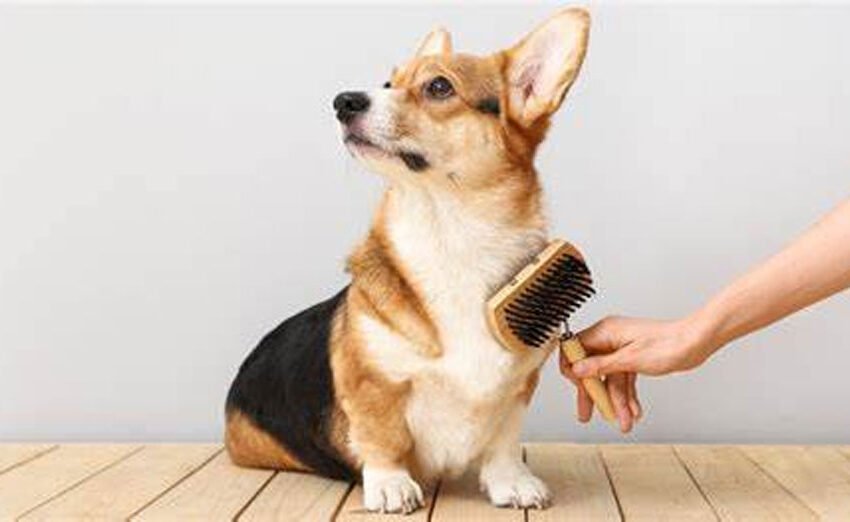The Importance of Pet Combs to Healthy Coat: Keeping Your Furry Friend Beautiful and Happy

How Pet Combs Promote Healthy Coat and Skin
Using pet combs is essential for maintaining your pet’s coat and skin health. Regular grooming with combs helps prevent issues and keeps your furry friend looking great.
Preventing Mats, Tangles, and Knots
Mats, tangles, and knots can form in your pet’s coat, especially in long-haired breeds. Regular combing helps to gently loosen and remove these tangles before they become a bigger problem.
When you comb your pet, you distribute the natural oils in their coat. This not only makes their fur shiny but also helps keep it healthy. By taking the time to groom frequently, you prevent painful mats that can irritate the skin.
A comb can easily reach areas that brushes sometimes miss. Make sure to focus on places like behind the ears, under the legs, and around the collar. This attention keeps your pet comfortable and free from knots.
Reducing Shedding and Loose Hair
Shedding is a natural process for pets, but it can create a mess in your home. Combing your pet regularly helps capture loose hair before it falls onto your floors and furniture.
Using a comb helps to remove loose fur effectively. As you comb, you can also collect hair that a brush might not catch. This reduces the amount of hair left around your home.
Regular grooming can lead to less shedding over time. It not only keeps your space tidy but also keeps your pet feeling fresh. Removing unnecessary fur prevents your pet from having to deal with excess weight in their coat.
Improving Circulation and Skin Health
Combing can stimulate blood flow to your pet’s skin. This increased circulation promotes healthier skin and a lusher coat. When you comb, you’re not just styling; you’re also taking care of their skin.
Good circulation helps deliver essential nutrients to the skin. This ensures your pet’s skin stays hydrated and reduces dryness. Healthy skin leads to a shinier and more vibrant coat.
Don’t forget to be gentle. A soft touch while combing helps avoid irritation. By combining brushing and combing, you can keep your pet’s coat in tip-top shape.
Minimizing Parasites and Fleas
Pet combs are useful tools for checking for parasites like fleas and ticks. When you regularly comb your pet, you can spot these issues early.
Combing can dislodge fleas and their eggs, making it easier to manage any infestations. This is especially important in warmer months when fleas are more active.
In addition to removing pests, the act of combing can also help you notice skin irritations or infections. Keeping an eye on your pet’s skin during grooming helps you respond to health issues promptly. Regular grooming becomes an essential part of your pet’s care routine.
Understanding Different Types of Pet Combs and Brushes
Knowing the right tools can greatly improve your pet’s coat health. Different brushes and combs serve specific purposes, which can make grooming easier and more effective. Here are the key types to consider.
Slicker Brushes vs. Bristle Brushes
Slicker brushes have fine, short wires close together. They are excellent for removing mats and tangles, especially in long or curly hair. By using this type of brush, you can lift the undercoat and remove loose fur, which helps keep your pet’s coat healthy and shiny.
Bristle brushes have softer bristles that are perfect for short-haired pets. They help remove loose fur and dirt, while also distributing natural oils through the coat. Regular use can keep your pet’s coat glossy and smooth.
Choosing between these two types depends on your pet’s coat type. For example, if your dog has a long, flowing coat, a slicker brush would be best. For pets with short fur, go for the bristle brush.
Pin Brushes and Pin Combs
Pin brushes are similar to slicker brushes but have rounded tips on the pins. This design makes them gentler on your pet’s skin while still detangling. They’re especially useful for pets with medium-length to long hair.
Pin combs have long, narrow teeth that are great for finishing touches. They can help you smooth out the final look after brushing. Pin combs also work well for dematting stubborn tangles, making them essential in your grooming tool kit.
When selecting your combs or brushes, remember: the right tool makes grooming easier and keeps your pet comfortable. Look for high-quality options to ensure effectiveness and safety.
Selecting the Right Grooming Tools for Your Pet
Choosing the right grooming tools is essential for maintaining your pet’s coat health. Each coat type has specific grooming needs. Using the correct tools will make the grooming process easier and more effective for you and your furry friend.
Choosing for Different Coat Types
Different coat types require different grooming tools. For short-haired dogs, a rubber dog brush can help remove loose fur and dirt without irritating their skin. For wiry coats, look for a slicker brush which can effectively remove tangles while keeping the coat looking neat.
For long-haired dogs, you will want an undercoat rake or a de-shedding tool. These tools help reach the undercoat where mats and loose hair can hide. Dogs with double coats, like Golden Retrievers, benefit greatly from a Furminator to reduce shedding and keep their fur shiny.
Special Tools for Long-Haired and Double-Coated Dogs
Long-haired dogs require special attention. Use a poodle comb or a wide-toothed comb to carefully work through tangles. Regular brushing prevents mats and helps distribute natural oils, keeping their coat healthy and shiny.
For double-coated dogs, like Siberian Huskies, an undercoat rake is ideal. This tool reaches the dense undercoat, removing dead hair without damaging the topcoat. Make sure to groom these dogs regularly, especially during shedding seasons, to keep their coat in top condition.
How to Use Pet Combs Effectively
Using pet combs properly can make a big difference in maintaining your pet’s coat. The right techniques and some tips can help you tackle tangles, reduce shedding, and keep your pet comfortable during grooming.
Proper Grooming Techniques
Start by choosing the right grooming comb based on your pet’s coat type. For instance, a metal comb is great for thick coats, while a flea comb is ideal for finding and removing pests.
Always brush in the direction of hair growth. Use light, even pressure to avoid pulling on your pet’s skin. Begin at the tail and work your way up to the head.
Make sure to take breaks, especially if your pet seems uneasy. You can also offer treats during grooming to create a positive experience. This encourages your pet to stay calm while you work through any knots or mats.
Addressing Common Grooming Challenges
Grooming can sometimes lead to challenges like tangles or mats. If you notice a tangle, use a comb to gently tease it apart. Start at the ends and work your way toward the base of the fur.
For pets that get stressed during grooming, consider using a quiet space. Playing soft music or giving your pet their favorite toy can help relax them.
If you spot fleas, use a flea comb to remove them effectively. Dip the comb in soapy water after each pass to trap the fleas. This makes the task easier and helps keep your home pest-free.
Remember, regular grooming makes future sessions easier. It’s all about patience and practice!
Benefits of Regular Professional and At-Home Grooming
Regular grooming is essential for your pet’s health and happiness. It keeps their coat healthy, prevents tangling, and helps spot any health problems early. You can either visit a professional groomer or groom your pet at home.
When to Visit a Professional Groomer
It’s a good idea to take your pet to a professional groomer every few months. Professional groomers have the tools and skills necessary for effective grooming. They can handle tasks like:
- Nail trimming: Prevents painful overgrowth.
- Ear cleaning: Helps avoid infections.
- Coat trimming: Keeps your pet’s fur manageable.
If your pet has a long or thick coat, a groomer can help prevent matting and tangles. Additionally, they can spot skin issues and parasites that you might miss at home.
Tips for Pet Owners Grooming at Home
Grooming at home can be fun and beneficial for both you and your pet. Here are some tips to make it easier:
- Brush Regularly: Use a pet comb to help reduce shedding and keep the coat smooth.
- Choose the Right Tools: Invest in good quality brushes, clippers, and nail trimmers.
- Establish a Routine: Set a regular grooming schedule to keep your pet accustomed to the process.
Make grooming a positive experience by rewarding your pet with treats. This helps build trust and makes future grooming easier.





